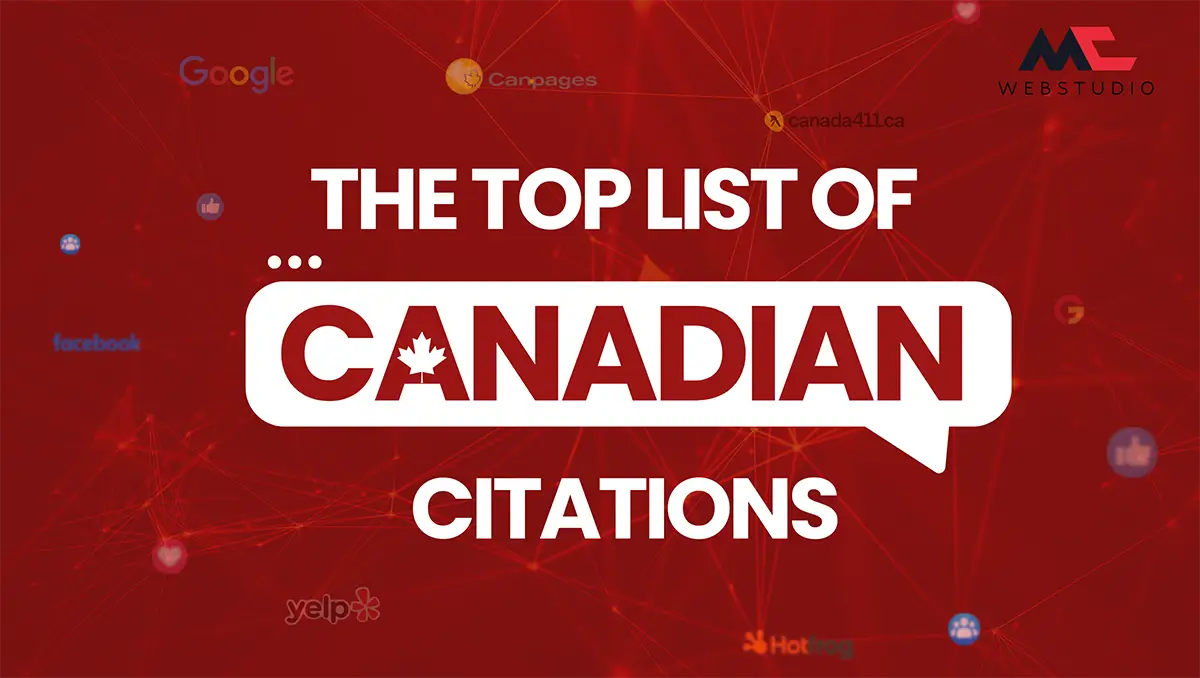
BrainStation Vancouver Review
Table of Contents My Personal BrainStation Vancouver Review 🧠 This is my BrainStation Vancouver Review. In 2018, after a year

Having excellent written content is essential for a successful content marketing campaign. Regardless of how effective your outreach is or how well you target keywords, subpar blogs, and articles won’t attract backlinks.
Creating SEO-friendly content requires a combination of artistic and scientific elements. On one hand, it must possess the appropriate technical structure and language usage to be search engine-friendly. Even if the content is well-written, it won’t rank well if it isn’t optimized for Google’s crawling process.
On the other hand, you need high-quality copy that is clear, concise, and easily readable on various devices, such as desktops and phones. User-friendliness and engaging behavior with the content are also crucial factors for SEO. Below we have compiled a list of the best SEO writing tips for guaranteed success.
Keyword research is a critical aspect of SEO content writing. It involves conducting comprehensive research to identify relevant and high-traffic keywords that are related to your topic. By understanding the specific words and phrases that people use when searching for information online, you can strategically incorporate these keywords into your content to improve its visibility in search engine results.
To conduct keyword research effectively, there are several tools available that can assist you in this process. Google Keyword Planner is a widely used tool that provides insights into keyword search volumes, competition levels, and related keywords. It helps you discover popular keywords and their variations, allowing you to optimize your content accordingly.
Another useful tool for keyword research is Ahrefs. It provides valuable data on keyword rankings, search volume, competition level, and even offers suggestions for related keywords. Ahrefs also provides insights into your competitors’ keyword strategies, giving you a competitive edge in your content creation.
When conducting keyword research, it’s important to consider both relevance and search volume. Relevance ensures that your content aligns with the users’ search intent, while search volume indicates the popularity and potential traffic associated with a particular keyword. Striking a balance between relevance and search volume is crucial to optimizing your content effectively.
Additionally, long-tail keywords should not be overlooked. These are more specific and longer keyword phrases that target a niche audience. While they may have lower search volumes, they often have higher conversion rates and less competition. Including long-tail keywords in your content can help attract more qualified traffic and improve the overall quality of your SEO strategy.
In summary, thorough keyword research using tools like Google Keyword Planner and Ahrefs enables you to identify relevant and high-traffic keywords for your content. By incorporating these keywords strategically, you can enhance your content’s visibility and increase its chances of ranking higher in search engine results.
Creating content around relevant topics is crucial for effective SEO writing. Consider the following points when creating content around such topics:
By creating content around relevant topics, you attract a targeted audience, establish authority, and enhance visibility in search engine results. Always prioritize quality, relevance, and user satisfaction in your content creation process.
To write for the web, optimize your content for easy consumption and engagement:
By following these guidelines, you can enhance readability, improve the user experience, and optimize your SEO content strategy.
Using catchy subheadings is a powerful technique to enhance the readability and visual appeal of your content. Subheadings act as signposts, guiding readers through the different sections of your article and capturing their attention. When crafting subheadings, make them compelling and intriguing, using attention-grabbing words and phrases that spark curiosity. Clear and descriptive subheadings also improve the overall organization and structure of your content, making it easier for readers to scan and locate the information they need. By incorporating eye-catching subheadings, you create a visually appealing and user-friendly experience, increasing engagement and keeping readers hooked throughout your content.
To make your subheadings more attractive, consider using techniques such as adding numbers or statistics, posing questions, using strong action verbs, or highlighting the benefits or key points of the section. Utilize formatting options like bold or larger font sizes to make the subheadings stand out visually. Remember to align your subheadings with the content of each section and maintain a logical flow to ensure they effectively guide readers and maintain their interest.
Molding your content for featured snippets is a valuable SEO strategy that can significantly boost your visibility in search engine results. Featured snippets are the concise summaries of information that appear at the top of search engine result pages, providing quick answers to users’ queries. To optimize your content for featured snippets, consider the following:
First, identify common questions or queries related to your topic and craft your content to provide direct and concise answers. Use headings or subheadings to separate each question and its corresponding answer, making it easy for search engines to identify and extract the relevant information.
Second, focus on providing clear and concise explanations or steps to address the user’s query. Break down complex concepts into easily digestible chunks and use bullet points or numbered lists for step-by-step instructions.
Third, utilize formatting techniques like using schema markup, incorporating relevant keywords in your content, and providing clear and descriptive subheadings that summarize each section. This helps search engines understand the structure and relevance of your content, increasing the chances of being selected for a featured snippet.
By optimizing your content with featured snippets in mind, you improve the visibility of your content, establish yourself as an authoritative source, and attract more organic traffic to your website. Remember to continue providing valuable and high-quality information to enhance user experience and engagement beyond the featured snippet.
Structuring your content for featured snippets goes beyond providing concise and informative text. Including visuals can greatly enhance the chances of your content being selected for a featured snippet. Visual elements such as images, charts, diagrams, or infographics can effectively complement your textual information and make it more engaging.
When optimizing your content for featured snippets, consider incorporating visuals that visually represent key concepts or steps. Use images or diagrams to illustrate complex ideas, graphs to showcase data, or infographics to present information in a visually appealing and easily understandable format.
Visuals not only enhance the overall aesthetics of your content but also increase its visual appeal, making it more likely to be selected for a featured snippet. Additionally, incorporating alt text and relevant captions for your visuals provides additional context and improves accessibility.
Remember to optimize the file size and format of your visuals to ensure fast loading times, as page speed is a crucial factor for both user experience and search engine rankings.
By combining concise and informative text with visually appealing elements, you increase the chances of your content being chosen for a featured snippet. The visual representation of information helps attract and engage users, making your content more memorable and shareable.
Incorporating internal links within your content is an effective strategy for enhancing the structure and SEO of your website. Internal links are hyperlinks that connect one page of your website to another, providing a seamless navigation experience for users and helping search engines understand the relationship between different pages. Here are some key considerations when placing internal links:
Incorporating statistics into your content can greatly enhance its credibility and impact. Statistics provide factual evidence and support the claims or arguments you make, making your content more persuasive and informative. Here are a few reasons why adding statistics to your content is beneficial:
Statistics provide quantitative data that can strengthen your points and make them more compelling. Whether you’re writing a blog post, an article, or a research paper, including relevant statistics adds depth and authority to your content. It demonstrates that you have conducted thorough research and adds credibility to your claims.
Statistics help to illustrate trends, patterns, or comparisons. They provide a visual representation of information that can be easier for readers to grasp and understand. By presenting statistical data in charts, graphs, or infographics, you make complex information more accessible and engaging for your audience.
Lastly, statistics can also make your content more shareable and link-worthy. When you provide unique or surprising statistics, readers are more likely to share your content with others, leading to increased visibility and potential backlinks. Additionally, other websites or publications may reference your content if it includes valuable and reliable statistics, further boosting your content’s credibility and reach.
When using statistics in your content, ensure that they are from reputable sources and properly cited. Fact-check the data to ensure accuracy and relevance. By incorporating statistics effectively, you can enhance the impact and credibility of your content, making it more informative and compelling for your readers.
When it comes to SEO best practices, there are several key factors to consider in order to optimize your content for search engines and improve your organic visibility:
Promoting your content and ensuring its longevity are essential for maximizing its reach and impact. Here are a few key practices to consider:
By actively promoting your content through various channels, building backlinks, and creating long-lasting evergreen content, you can increase its visibility, attract a wider audience, and maintain its relevance over time. Continuously monitor and analyze the performance of your content, adapting your promotion strategies and updating your content when necessary to maximize its impact and ensure its longevity.
To optimize your content for SEO, focus on keyword research, incorporating target keywords strategically, and creating high-quality, valuable content. Utilize eye-catching subheadings, incorporate relevant statistics, and include internal links for improved structure and navigation.
Promote your content through various channels, build backlinks, and aim for evergreen and comprehensive content. By following these best practices, you can enhance the visibility, reach, and longevity of your content, ultimately driving organic traffic and improving search engine rankings.

Table of Contents My Personal BrainStation Vancouver Review 🧠 This is my BrainStation Vancouver Review. In 2018, after a year

Table of Contents In today’s digital landscape, starting a business from your laptop or phone in Canada offers unprecedented flexibility

Table of Contents Top Local Business Citations In Canada 🍁 Google Business Profile Ahrefs Domain Rating: 98 Facebook Ahrefs
Copyright © 2024 MC Web Studio | Designed & Developed In Kamloops, BC 🍁